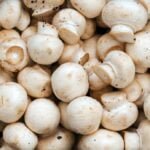what temp does reishi fruit at
Reishi mushrooms, scientifically known as Ganoderma lucidum, have gained immense popularity due to their medicinal and therapeutic properties. Cultivating Reishi mushrooms requires careful attention to various environmental factors, with temperature being a key consideration. In this comprehensive post, we will delve into the optimal fruiting temperature for Reishi mushrooms, explore the factors that affect their growth, and provide tips for successful cultivation.
1. Reishi Fruiting Temperature: Understanding the Basics
The ideal fruiting temperature for Reishi mushrooms falls between 25 to 30 degrees Celsius (77 to 86 degrees Fahrenheit). This temperature range is crucial as it promotes the development of fruiting bodies, which are the visible parts of the mushroom that contain spores. By maintaining the right temperature conditions, cultivators can maximize the yield and quality of Reishi mushrooms.
2. Reishi Mushroom Temperature Range: Factors Affecting Fruiting
To understand Reishi mushrooms’ temperature requirements better, it is important to consider the following factors affecting fruiting:
a) Incubation Phase: During the incubation phase, Reishi mycelium grows within the substrate. The optimal temperature for mycelial growth typically falls between 22 to 28 degrees Celsius (72 to 82 degrees Fahrenheit). This temperature range allows the mycelium to establish a robust network necessary for successful fruiting.
b) Fruiting Phase: Once the mycelium has colonized the substrate, the fruiting phase begins. This stage requires a slightly higher temperature range compared to the incubation phase, usually around 25 to 30 degrees Celsius (77 to 86 degrees Fahrenheit). Adequate warmth encourages the formation of fruiting bodies, enabling the Reishi mushrooms to enter their reproductive cycle.
3. Optimal Temperature for Reishi Fruiting: Achieving Success
To ensure optimal Reishi fruiting, consider the following temperature-related cultivation tips:
a) Heat Source: Provide a reliable and controlled heat source to maintain the desired temperature range. Heating mats, thermostats, or incubators specifically designed for mushroom cultivation can accomplish this. It is crucial to ensure even heat distribution to avoid fluctuations that may adversely affect growth.
b) Temperature Monitoring: Regularly monitor the temperature throughout the cultivation process. Use a digital thermometer or temperature probes to ensure that the conditions remain within the recommended range. Small fluctuations are normal, but extreme temperature variations should be rectified promptly to avoid detrimental effects on growth.
c) Air Circulation: Proper airflow within the cultivation area is essential to maintain a consistent temperature. Stagnant air can result in temperature variations and create conditions conducive to contamination. Consider using fans or circulation systems to ensure air movement while maintaining the desired temperature range.
4. Reishi Growth Temperature: Adapting to Specific Conditions
Although the optimal fruiting temperature for Reishi mushrooms is considered to be 25 to 30 degrees Celsius (77 to 86 degrees Fahrenheit), it is important to note that Reishi is relatively adaptable to different temperature ranges. Depending on the specific strain of Reishi and cultivation method, successful fruiting has been reported at temperatures slightly outside the recommended range.
5. Temperature Requirements for Reishi Cultivation: Beyond Optimal Conditions
While temperature plays a significant role in Reishi cultivation, there are other aspects to consider for successful growth:
a) Light Exposure: Reishi mushrooms typically thrive in low light environments. Limited exposure to natural or artificial light is preferred during the fruiting phase, as excessive light can inhibit fruiting.
b) Humidity: Adequate humidity levels are crucial for Reishi cultivation, especially during the fruiting phase. Aim for a relative humidity of 80-90% to promote healthy development.
c) Substrate Selection: Reishi mushrooms have shown successful growth on a variety of substrates, including hardwood sawdust, wood chips, and straw. Ensure that the chosen substrate is properly sterilized to prevent contamination.
Conclusion
Understanding the optimal temperature range for Reishi fruiting is fundamental to successful cultivation. By maintaining a temperature range of 25 to 30 degrees Celsius (77 to 86 degrees Fahrenheit) during the fruiting phase, cultivators can promote robust growth and obtain high-quality Reishi mushrooms. Implementing the suggested temperature monitoring, proper heat source, air circulation, and considering other growth requirements will greatly enhance the chances of a successful Reishi mushroom harvest. Happy cultivating!




